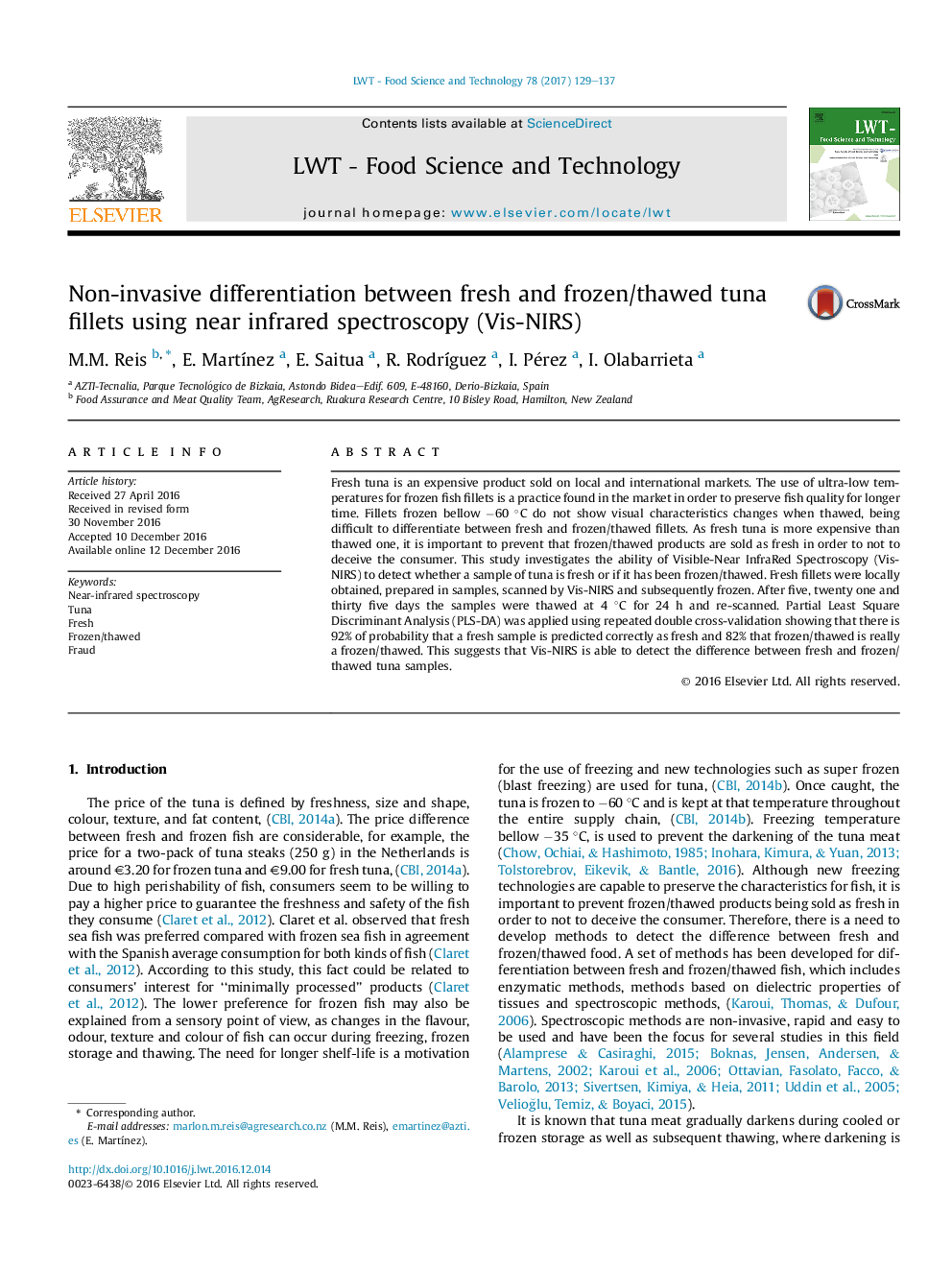| Article ID | Journal | Published Year | Pages | File Type |
|---|---|---|---|---|
| 5769029 | LWT - Food Science and Technology | 2017 | 9 Pages |
â¢Non-invasive VIS-NIRS based tool for detection of tuna freshness.â¢Probability 92% that a fresh sample is predicted correctly as fresh and 82% that frozen/thawed is really a frozen/thawed.â¢Blooming or length of storage do not affect predictions.
Fresh tuna is an expensive product sold on local and international markets. The use of ultra-low temperatures for frozen fish fillets is a practice found in the market in order to preserve fish quality for longer time. Fillets frozen bellow â60 °C do not show visual characteristics changes when thawed, being difficult to differentiate between fresh and frozen/thawed fillets. As fresh tuna is more expensive than thawed one, it is important to prevent that frozen/thawed products are sold as fresh in order to not to deceive the consumer. This study investigates the ability of Visible-Near InfraRed Spectroscopy (Vis-NIRS) to detect whether a sample of tuna is fresh or if it has been frozen/thawed. Fresh fillets were locally obtained, prepared in samples, scanned by Vis-NIRS and subsequently frozen. After five, twenty one and thirty five days the samples were thawed at 4 °C for 24 h and re-scanned. Partial Least Square Discriminant Analysis (PLS-DA) was applied using repeated double cross-validation showing that there is 92% of probability that a fresh sample is predicted correctly as fresh and 82% that frozen/thawed is really a frozen/thawed. This suggests that Vis-NIRS is able to detect the difference between fresh and frozen/thawed tuna samples.
